Diogo Monteiro takes a look back at Hong Kong’s Kai Tak airport and its unique checquerboard runway approach path.
It has been 23 years since Hong Kong’s Kai Tak International Airport ceased operations. But many of the elements that made it unique in the memory of aviation lovers, such as the famous approach, are still very much present.
Kai Tak served the former British colony of Hong Kong in the People’s Republic of China. Inaugurated in 1925, Kai Tak or (HKG/VHHH) was instrumental in the development and growth of Hong Kong so that the city could become what it is today in the 21st century.
Historical and temporal context of Hong Kong
With the end of the two Opium Wars between China and the British Empire, which at the time was the greatest military power in the world, the United Kingdom won these two wars with the Chinese very easily. The defeated China was forced to accept very unfavorable and humiliating conditions with the British in commercial exchanges thereafter.
In 1842 with the end of the First Opium War, the British demanded that China gives up a small island to form a British colony in that country. Thus, was born Hong Kong (which means fragrant port).
Due to its excellent and strategic geographic position, Hong Kong quickly became a very important trading place, to the point where the British centralized practically all trade between China and Japan there.
In 1860, with the British victory in the Second Opium War, the British claimed China, the mainland peninsula in front of the island of Hong Kong, in order to expand the city and its infrastructure. This area would be known until today as “Kowloon” and would then be annexed to the colonial territory of Hong Kong.
Because the limited amount of space was small for the rapidly expanding city, the British Empire in 1898 rented from China a large portion of land on the mainland near Kowloon, as well as some small islands. This agreement with China provided that the lease period for this territorial space would be 99 years (until 1997). This new area became known as the “New Territories” and, like Kowloon, was annexed to the colonial territory of Hong Kong. These three areas together make up Hong Kong as it is known today.
Kai Tak’s First Steps and Development
At the beginning of the 20th century, there was at the bottom of Kowloon Bay an area called “Kai Tak”, alluding to the names of its owners: Kai Ho Kai and Au Tak. With the chronic lack of space in Hong Kong, betting and trading in real estate has always been a very lucrative source of income. However, the area and businesses owned by Messrs. Kai and Tak did not go the best way because the partners spent too much money on the works of the contract and the project went bankrupt, even before the lots were put up for sale.
The land with this was abandoned for several years until 1924, when the Hong Kong Colony Government bought this land with the intention of making an airport there. However, the area of this initial land would only later correspond to the area that would be the airport terminals and aprons. Thus, with the construction of the airport, Hong Kong gained an air club with a grass runway and a Royal Air Force base. The first flight from Kai Tak Airport took place in early February 1925, on the day of the Chinese Lunar New Year. However, commercial flights only started in 1936, through Imperial Airways (the predecessor of British Airways). Pan Am Clippers and Air France flights followed. With this, the movement at Kai Tak airport was increasing, with Hong Kong becoming more and more considered a crucial trading point worldwide.
With World War II, Japan attacked Kong Kong in 1941 and occupied the territory for 4 years until 1945. During this period Kai Tak was expanded through slave labor of prisoners of war, leaving the runway paved and the airport transformed into a Japanese Imperial Air Force base. After the Japanese surrender, Kai Tak returned to being controlled by the British and
transforming itself again into a civilian airport. In 1946, Cathay Pacific, Hong Kong’s first local airline, was founded, the airline being based at this airport. At this point Kai Tak had two runways, the largest of which was only 450 meters long. With the end of the war and with the increase in the level of passengers and aircraft capacity, this size proved to be insufficient for aircraft to operate in Hong Kong. The land surrounding the airport made it impossible to expand the airport
as it was already full of housing and other infrastructure. The only solution was the expansion of the airport through an offshore platform (something very similar to the expansion of Funchal Airport in Portugal), and so it was done.
In 1954, work began on expanding the airport and two years later, the runway 13/31 was inaugurated with a length of 1660 meters. The following year it was increased further to 2530 meters. However, this size was still insufficient for long-haul aircraft at the time such as the DC-8 and the Boeing 707 to operate there. In 1962 a new expansion: this time to 3390 meters. Initially the problem seemed solved. However, it was confirmed that no. The runway turned out to have
several problems later on. Problems that caused Kai Tak to be nicknamed “Kai Tak’s Heart Attack” and becomes a legendary airport in aviation history. Other problems contributed to make Kai Tak a difficult airport to operate: China’s airspace was prohibited for foreign planes with a few exceptions. With this, the planes had to start the approach to Hong Kong by sea in a
previously calculated route where they could not fly over the Chinese islands and not over the Chinese territorial sea.
Runway 13 is Kai Tak’s fame. However, runway 31 is often forgotten. Logically, if approaching runway 13 was a big challenge, approaching runway 31 from the sea should be smoother. The answer is no. 99.9% of the time it was runway 13 that was in use at Kai Tak due to crosswind direction. If the wind was already difficult on the approach to runway 13, the wind was much worse on the approach to runway 31 which mostly contained strong gusts of wind and windshear, thus making the approach to runway 31 even more dangerous than the approach through the curve over the city.
Another problem regarding the use of runway 31 was that of take-off, which was towards the city and the mountains. In Kai Tak, mostly long-haul aircraft operated, and it was impossible to take off with the same weight as runway 31, as when taking off from runway 13 towards the sea, with the aggravating factor that very steep climb gradients and a turn would have to be met to comply with minimum altitudes in relation to the surrounding terrain. For planes of the time like
the Airbus A340, this was simply impractical, having to give up either fuel or cargo.
IGS Approach and the Hong Kong Heart Attack
“Kai Tak was one of the last major airports in the world where you really had to rely on basic flying skills—stick and rudder—and we were all a bit sad when it closed,” – Captain Dave Newbery (Cathay Pacific)
One of the problems at the airport was that Kowloon Bay (where the airport was located) was relatively narrow and oriented northwest-southeast, so the runway had to be made in this direction. However, this runway direction is perpendicular to the prevailing wind direction in Hong Kong. Meaning in practical terms that the planes at take off and landing on the new runway would do so most of the time with a large amount of crosswind, going against the normal configuration of airports worldwide where runways are in the same direction as the prevailing wind direction.
However, wind direction and runway direction were not the only problems at Kai Tak Airport. The orography in Hong Kong completely precluded a straight, long, straight and gradual conventional landing to the runway. Welcome to the story of the famous IGS approach to runway 13 of Kai Tak:
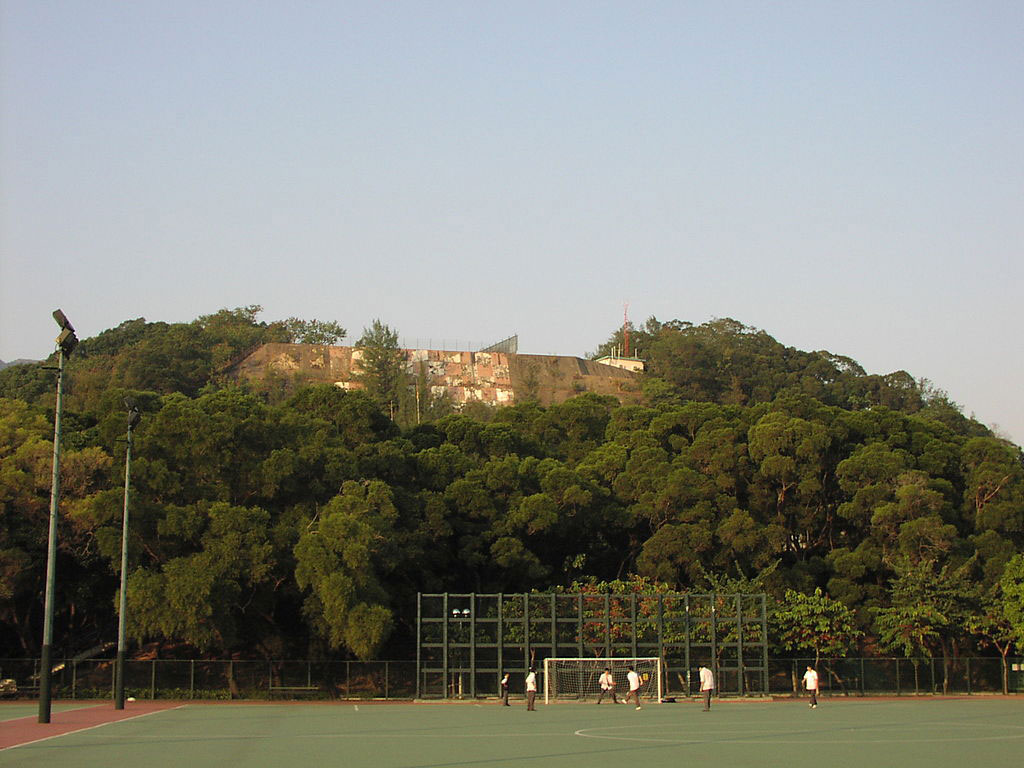
Tksteven, CC BY-SA 2.5 <https://creativecommons.org/licenses/by-sa/2.5>, via Wikimedia Commons
What differentiated Kai Tak and what made this airport so peculiar was its famous IGS (Instrument Guidance System) approach to runway 13. The pilots started the approach procedure via IGS in a straight and gradual line to a point called “Checkboard Hill”, which was a hill with a slab painted in red and white checkered. From this point, the pilots turned off the
autopilot and manually flew the plane making a turn of approximately 47º to align with the axis of the runway, always in visual conditions just 2 NM (3.7 km) from the runway. Whoever flew to Kai Tak had to have special training, as it is nowadays necessary to operate to Funchal or London City Airport, since this procedure was extremely complex and delicate, requiring all the piloting training available to be able to do it.
During this final approach phase, the aircraft were already flying very low at speeds around 300 km/h, over the Western Kowloon district. From there, the aircraft passed over apartment buildings and busy streets, as well as over spotters on the roofs of Kai Tak’s buildings, which provided a fascinating and, at the same time, terrifying spectacle for the locals and tourists visiting the site. just to photograph the approaches most often made by long-haul planes in ’90s fashion: MD-11, Boeing 747, DC-10, Concorde… Before the wheels finally touched the runway, probably with an audible sigh of relief. This procedure has not changed from the start. The turns that were once made by small piston planes were now made by air giants. Kai Tak was the mandatory tour for anyone who was a fan of aviation.
Airport Infrastructure
Kai Tak was built under a canal, so its expansion capacity has always been limited. At the end of its life, it had a two-way track with 3390 meters in length. Despite being an International Airport, Kai Tak only had 8 gates directly connected to the passenger terminal. The vast majority of flights were attended by stairs and planes were parked on the apron. The airport also had a cargo terminal, which was located in the south of the east apron. It also had an aeronautical fuel and supply infrastructure, but due to the lack of space, it was located between the passenger terminal and the hangars of HAECO (an aeronautical engineering and maintenance group).
The airport also had a single passenger terminal and a car park for workers and passengers.
Airlines to Operate
More than 70 airlines operated to and from Kai Tak during its period of activity. Among them Swissair, Varig, United Airlines, Cathay Pacific, Singapore Airlines, SAS, Qatar Airways, Qantas, Pan Am, Malaysia Airlines, Lufthansa, KLM, JAL, EVA Air, Dragonair, El Al, Alitalia, Air France, Asiana among many others that carried millions of passengers and tons of cargo to and from Hong Kong for 73 years.
Kai Tak Airport also served as a base for Cathay Pacific, Dragonair, Air Hong Kong Limited, Hong Kong Airways and British Asia Airways.
The Last Few Years
Hong Kong’s rapid development has placed immense pressure on the airport’s responsiveness. Its use was very close and often exceeded its responsiveness. This responsiveness was 24 million passengers/year, but in 1996 Kai Tak received 29.5 million passengers/year plus 1.56 million tons of cargo, making it the 3rd busiest airport in the world in terms of international passenger traffic and busier in terms of international cargo handling.
In addition, permit requirements for take-offs and landings made it necessary to limit the height of buildings that could be constructed in the Kowloon area. While in the early days, Kai Tak was located away from residential areas, the expansion of both residential areas and the airport resulted in Kai Tak’s proximity to residential areas. This caused a serious noise and pollution problem for residents near the airport and placed height restrictions as noted, which were removed following the closure of Kai Tak. The night time restriction between 11:30pm and 6:30am also severely restricted operations in Kai Tak.
As a result, in the late 1980s, the Hong Kong Government began looking into alternative locations for a new airport in Hong Kong to replace the old Kai Tak Airport. After mulling over several locations, the choose turned to build the new airport on the island of Chek Lap Kok, near Lantau Island. The new airport is located away from the main residential areas of Hong Kong, which helps to minimize the dangers of a serious accident and also to reduce the nuisance of noise pollution for the surrounding populations.
June 31, 1997. The United Kingdom leaves Hong Kong’s sovereignty and hands it over to China again. Kai Tak closes almost a year later on July 6, 1998.
“Goodbye Kai Tak and Thank You”
The new airport located on the island of Chek Lap Kok, was officially opened on July 6, 1998 to replace the functions of the former Kai Tak Airport.
On July 6, 1998 at 1:28 am, after the last aircraft took off for Chek Lap Kok, Kai Tak was finally retired as an airport. The final flights were:
Last arrival at Kai Tak was Chongqing Dragonair KA841 (operated by an Airbus A320-200) which
landed on Runway 13 at 23:38.
Last departure: The Cathay Pacific ferry flight code CX3340 to Hong Kong’s new airport Chek Lap Kok (operated by an Airbus A340-300) took off from Runway 13 at 01:05.
The last scheduled commercial flight was the Cathay Pacific CX251 to London – Heathrow (operated by a Boeing 747-400) which took off from Runway 13 at 00:02.
After the last flight, CX3340, took off from Kai Tak International Airport to the new Hong Kong International Airport – Chek Lap Kok at 01:28 HKT, Kai Tak was permanently closed, transferring its ICAO and IATA airport codes to the airport replacement at Chek Lap Kok (HKG/VHHH), ending 73 years of operating history.
A small ceremony to commemorate the airport’s end of life was held inside the control tower after the take-off of the last CX3340 flight. Richard Siegel, then director of civil aviation, gave a short speech ending with the words “Goodbye Kai Tak and thank you.”, before dimming the lights briefly and then turning them off forever.
This was followed by a major overnight logistics operation to transfer all essential airport supplies and vehicles that were left at the former Kai Tak airport to operate the remaining flights (some of the non-essential ones had previously been transported to the new airport). All this material was transported to Chek Lap Kok in one massive move, with police escort.
The new airport on the island of Chek Lap Kok was thus opened at 6 am on July 6, 1998 with the arrival of Cathay Pacific Flight CX889 (nicknamed “Polar 1”) from New York. The first week of operations was interrupted by a sequence of IT failures based on software bugs in the Flight Information Display System. This, in turn, disrupted baggage handling and airlift allocation. But by the end of the first week, these challenges and other initial issues had largely been resolved, the new airport was exceeding Kai Tak’s performance measures. The exception was the main air cargo terminal at the new airport, built and operated by HACTL as a franchisee. The terminal faced great difficulties to start operating on July 6th, so it closed again on July 7th to allow the franchisee to implement a major recovery program. The disruption this caused to air cargo operations at the new airport led the Government to temporarily reactivate the Kai Tak cargo terminal for a month.
During this period, Kai Tak received the temporary ICAO code VHHX.
Post-Life and Today
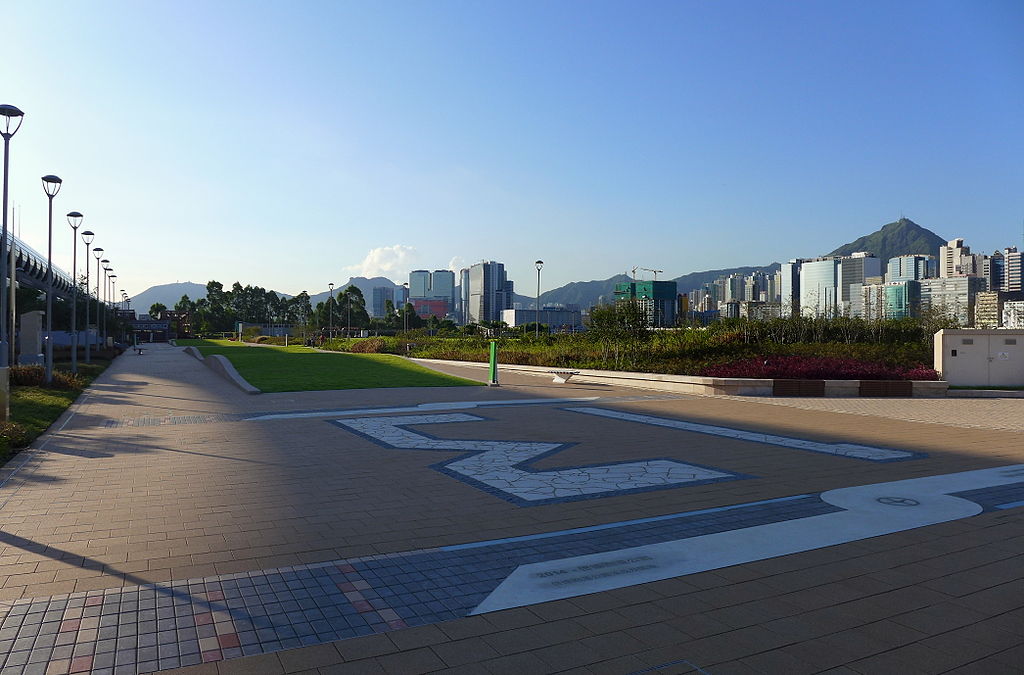
The passenger terminal at Kai Tak Airport later housed Hong Kong Government offices, car dealerships and showrooms, a go-kart racing track, a bowling alley, a golf course and other recreational facilities. In the mid-2000s, the passenger terminal and hangars were demolished.
Many aviation enthusiasts were upset at Kai Tak’s death because of the unique approach to runway 13. As leisure and private aviation were not allowed in Chek Lap Kok (having moved to Sek Kong airfield), some enthusiasts lobbied to maintain about 1km of the Kai Tak runway for general aviation, but the suggestion was rejected by the Government, which planned to build a new cruise terminal at Kai Tak.
The Hong Kong concert of Celine Dion’s “Let’s Talk About Love” world tour was held on the airport runway on January 25, 1999.
Faced with such an intense risk and movement, the airport has no record of major aeronautical catastrophes during its 73-year history. Some planes, such as a Thai Airways Caravelle and a China Airlines Boeing 747-400 crashed when they tried to land during typhoons. The Caravelle accident killed 24 people, while the 747 accident caused no casualties.
The worst accident at Kai Tak occurred with a US Marine Corps Lockheed C-130 Hercules, which crashed into the sea due to loss of control after takeoff from runway 13, killing 59 of 71 people on board. However, there were numerous incidents due to crosswinds that damaged landing gear and wing engines.
For those who have lived, felt and operated in Kai Tak, the longing for those breathtaking approaches is immense. For the younger ones who hear the stories and legends of Kai Tak, here are photos and videos of what was one of the best and most complex airports in the world.
 Lost Airlines of Asia
Lost Airlines of Asia
Lost Airline Colours of Asia is a new full-colour photographic book looking at the lost airlines from across Asia, including those once seen regularly at Kai Tak. As well as lost airlines, the book includes many pictures of older liveries – and even special liveries – worn by airlines that still exist today. It is a wonderful trip down memory lane for aviation enthusiasts who remember Asia’s airlines over the past 50 years.




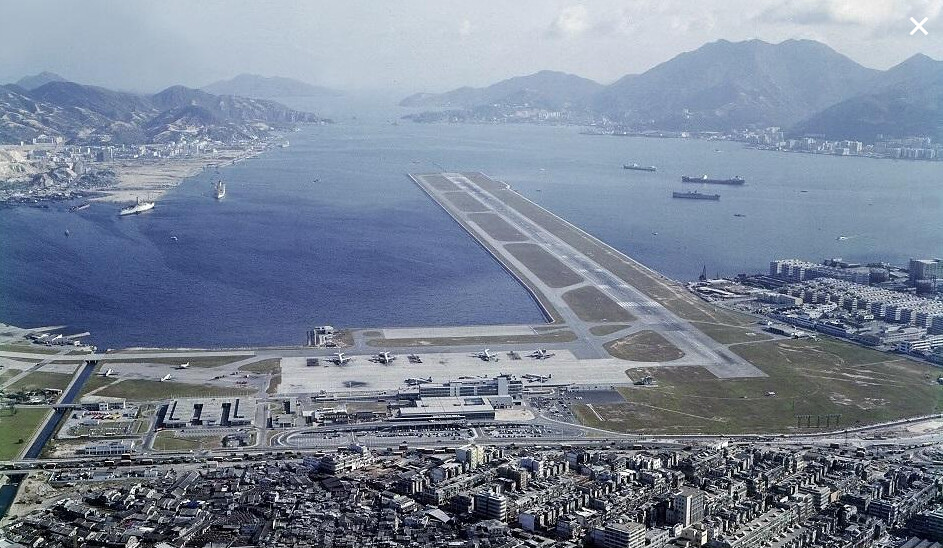
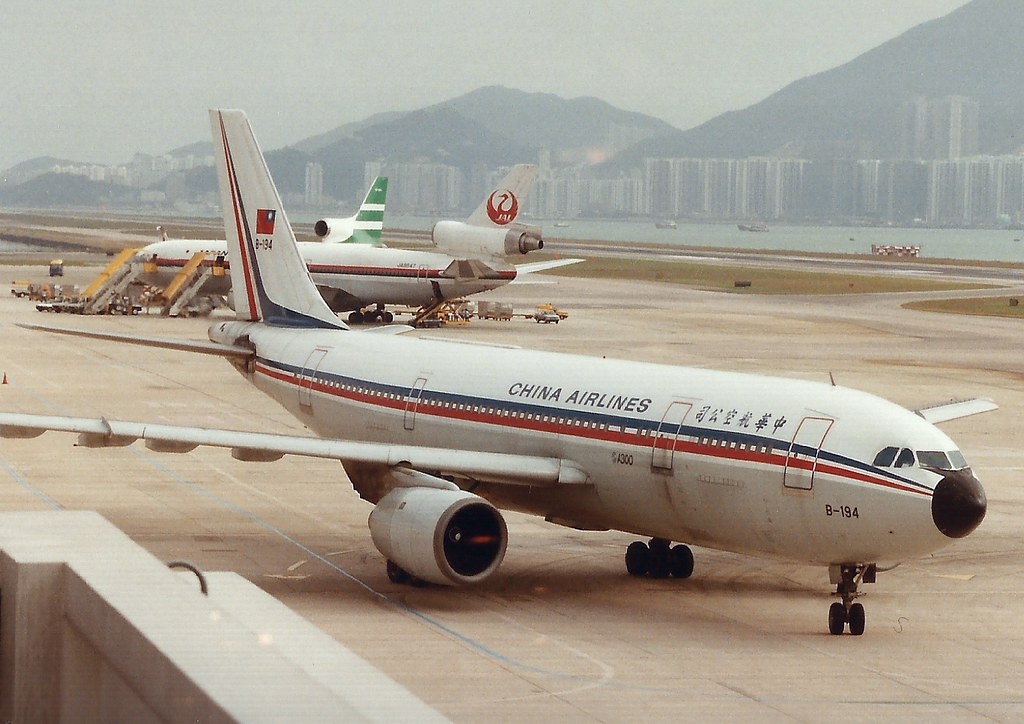
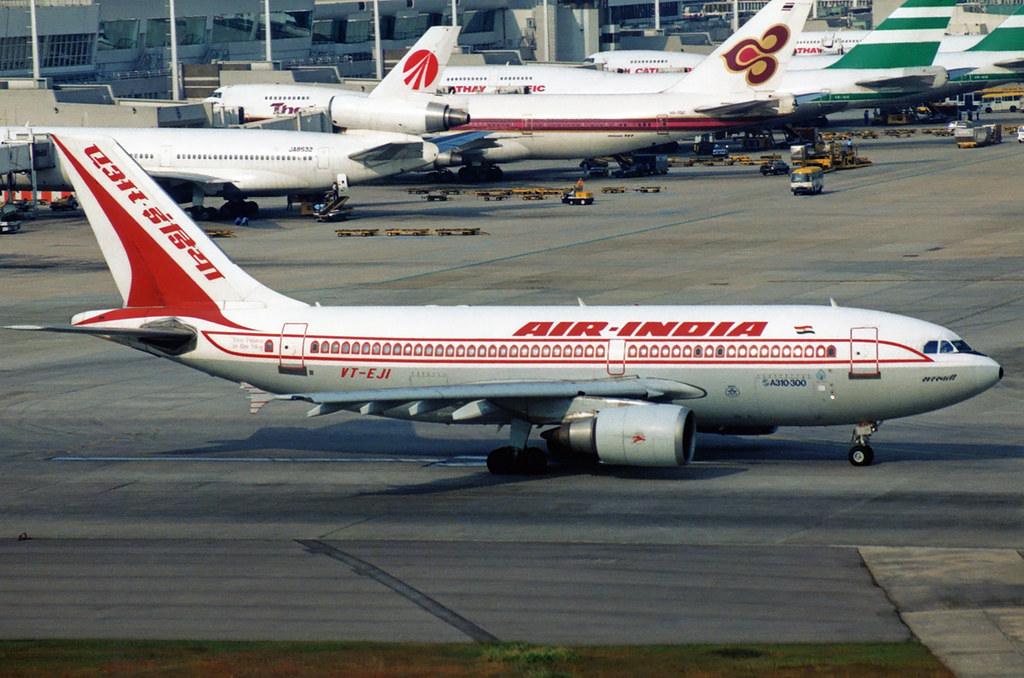
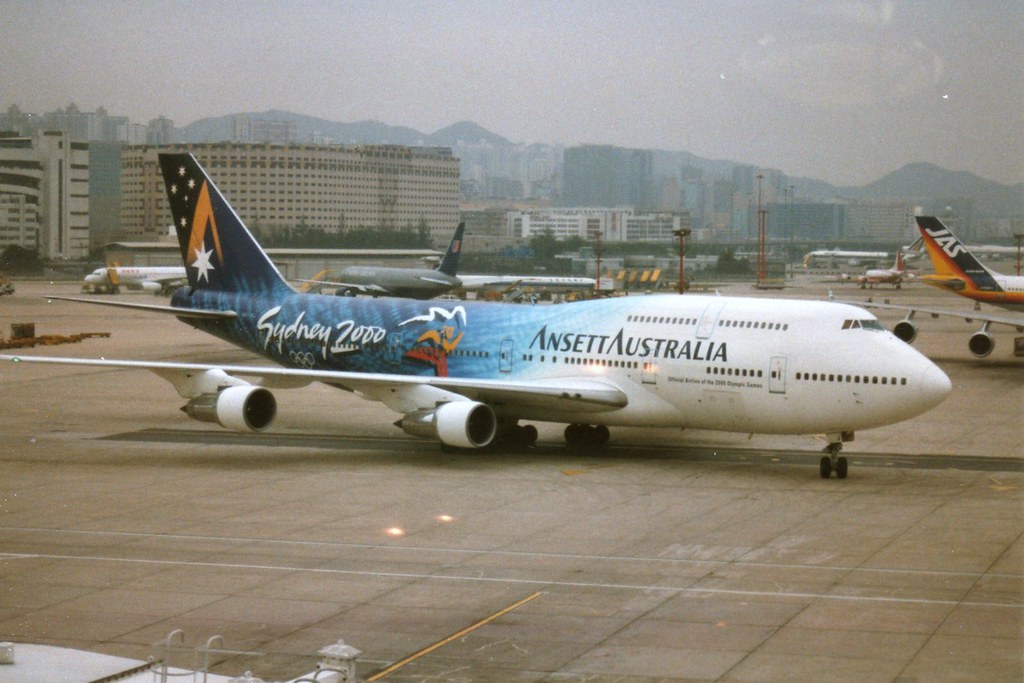





3 comments
First time at HKG-Kai Tak was May 1970 on a BOAC B 707 G-APFC LHR/SYD ( emigrating) and many time since . Have flown through Chek four times with CATHAY and VIRGIN ATLANTIC.
The ”flying just above the apartment block roofs” was legendary and I managed to capture a few of those approaches.
Kai Tak was just very nostalgic, had that bit of eastern mystery about it.
I flew into Kai Tak only twice. The first time was in a DC-4 of American International. I was station manager at Clark AFB in the Philippines for the MATS inter island contract and had to renew my visa, which could not be done in Manila. I rode in the jump seat behind the Captain for the checkerboard approach, of course a much slower approach than my 2nd flight. ( I returned to Manila on an Electra of Cathay Pacific). This was on a Convair 880 of CAT (they only had one) from Okinawa and Taipei. This was at night so I only saw some apartments passing under the wing on the final part of the approach. Good memories.
Wow, fantastic memories John!